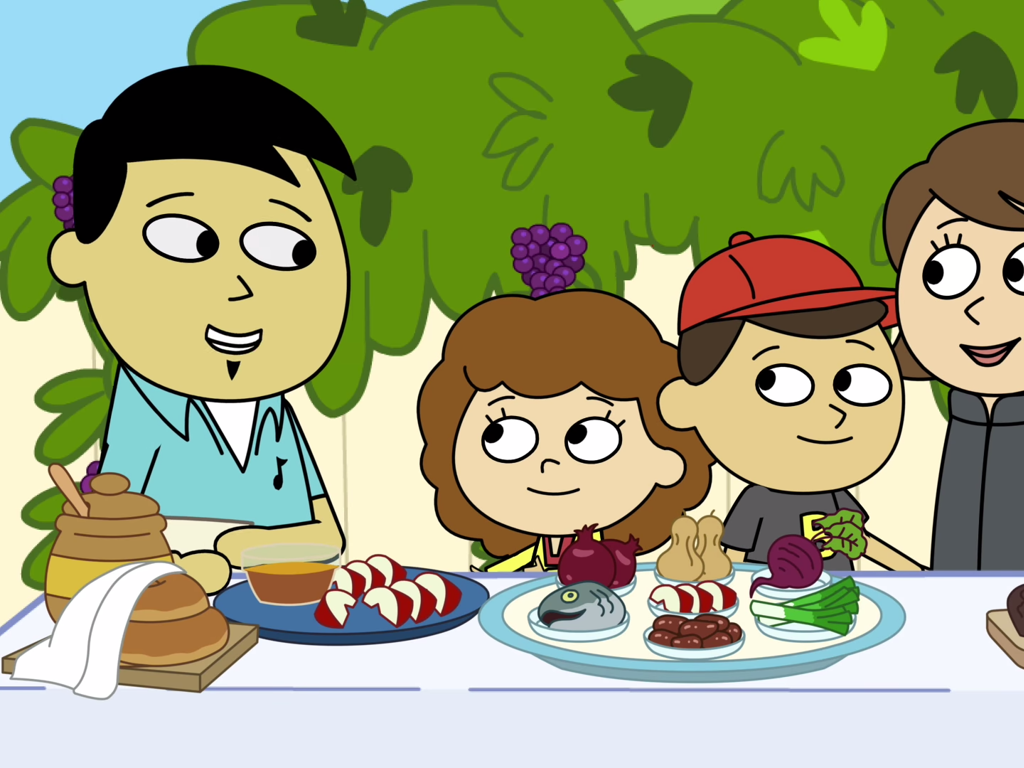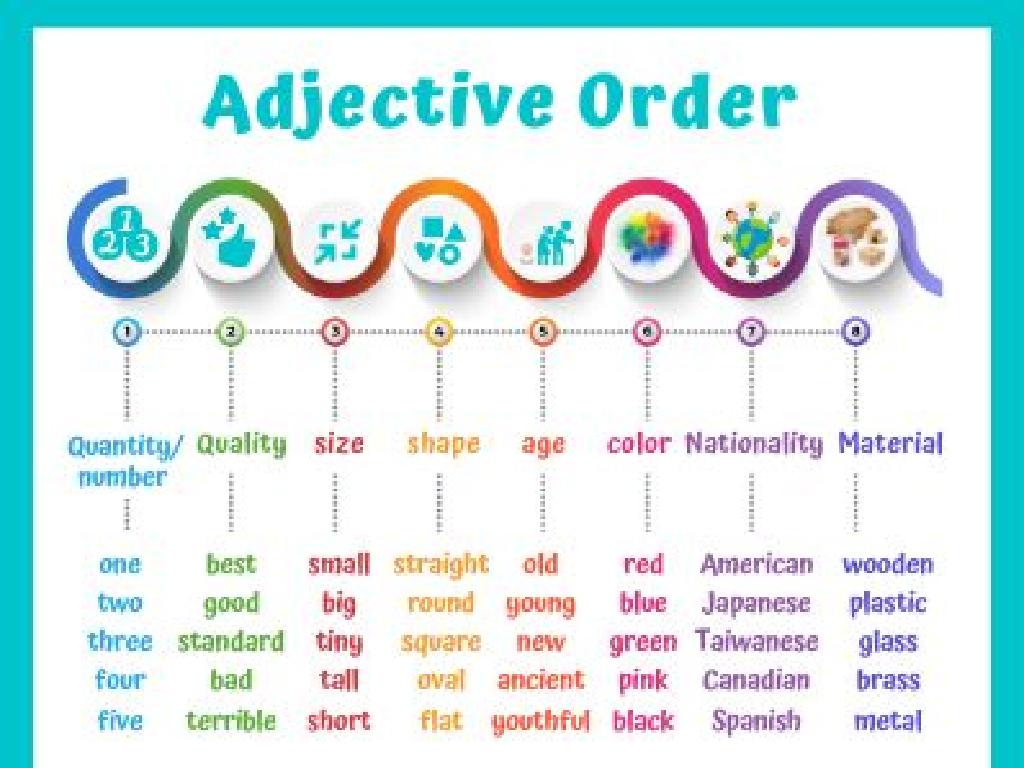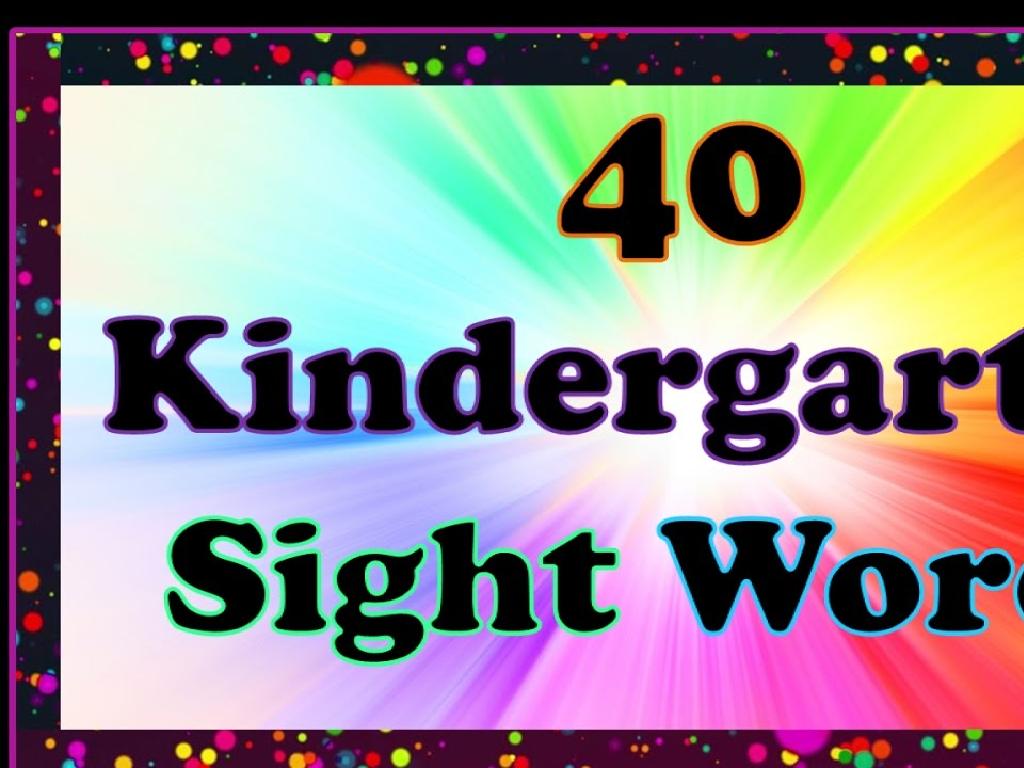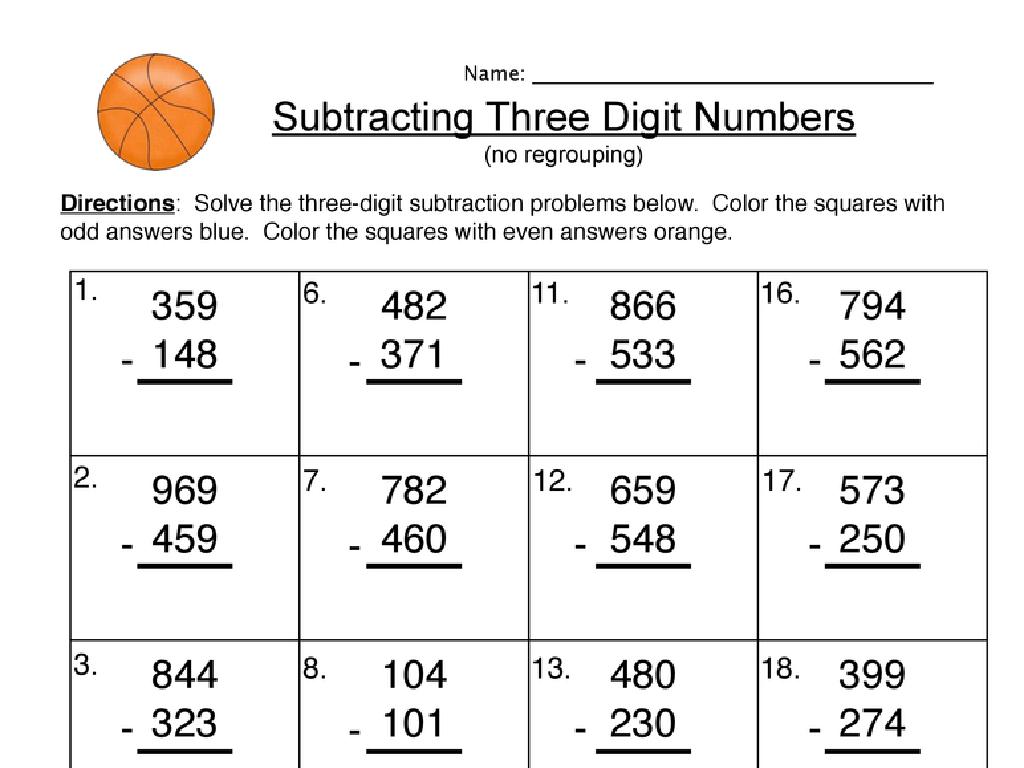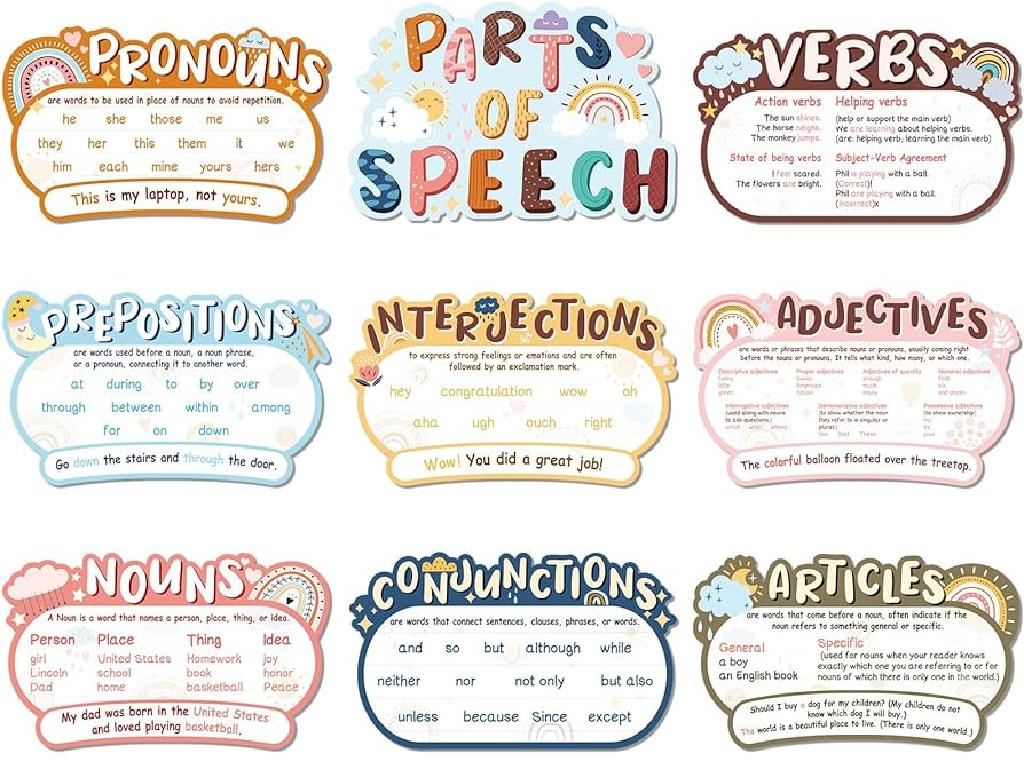Comparison Word Problems - Up To 20
Subject: Math
Grade: Second grade
Topic: Mixed Operations Word Problems: One Digit
Summary: This engaging second-grade math lesson focuses on comparison word problems using numbers up to 20. Students practice identifying 'more than,' 'less than,' and 'equal to' through real-world examples, subtraction, and number lines. Interactive activities, such as group problem creation and a classroom scavenger hunt, promote collaboration and deeper understanding. By solving and discussing these problems, students build essential math and analytical skills for future learning success.
Please LOG IN to download the presentation. Access is available to registered users only.
View More Content
Math Adventures: Comparison Word Problems
– Explore ‘More Than’ & ‘Less Than’
– ‘More than’ means a number is bigger, ‘less than’ means smaller
– Practice with numbers up to 20
– Use numbers 1-20 to compare and find differences
– Solve real-world problems
– Example: If Sam has 15 apples and Ana has 7, who has more?
– Share solutions with classmates
– Discuss how you solved the problems and learn from others
|
This slide introduces second graders to comparison word problems involving numbers up to 20. Begin by explaining the concepts of ‘more than’ and ‘less than’ with simple examples. Encourage students to use these terms when comparing quantities. Provide practice problems that relate to their everyday experiences, such as comparing amounts of fruits or toys. After solving the problems, have students share their solutions and methods with the class to foster a collaborative learning environment. This will help them understand different approaches to solving comparison problems.
Understanding Comparison Word Problems
– Comparing two quantities
– Clues: ‘more’, ‘less’, ‘equal’
– Example: Tom vs. Jane’s apples
– Tom has 5 apples, Jane has 8. Who has more?
– Solving comparison problems
– Use subtraction to find the difference: 8 – 5 = 3
|
Comparison word problems involve analyzing two quantities to determine their relationship using clues such as ‘more’, ‘less’, or ‘equal’. For example, if Tom has 5 apples and Jane has 8, we compare the numbers to see that Jane has more. To solve these problems, students can use subtraction to find the difference between the two quantities. In this case, subtracting Tom’s apples from Jane’s gives us 3, showing that Jane has 3 more apples than Tom. Encourage students to practice with similar problems and to look for keywords that indicate comparison.
Understanding Comparison Words
– ‘More than’ for bigger numbers
– If Tom has 3 more apples than Jim, Tom has a larger number of apples.
– ‘Less than’ for smaller numbers
– If Sara has 2 less candies than Eva, Sara has a smaller number of candies.
– ‘Equal’ means the same
– If Bob has 5 marbles and Joe also has 5, they have an equal amount.
– Practice with examples
|
This slide introduces students to key vocabulary used in comparison word problems. ‘More than’ indicates that one quantity is larger than another, while ‘less than’ indicates the opposite. ‘Equal’ is used when two quantities are the same. Use everyday examples to illustrate these concepts, such as comparing the number of fruits or toys children have. Encourage students to visualize the comparisons by drawing simple pictures or using objects. During class, practice with example problems that use these key words to solidify understanding. For instance, ‘If a tree has 7 more birds than another, and the second tree has 8 birds, how many are in the first tree?’ (Answer: 15 birds).
Let’s Practice Together: Candy Comparison
– Sally has 12 candies, Tom has 7
– How many more candies does Sally have?
– Compare to find the difference
– We look at Sally’s and Tom’s candies to see who has more
– Calculate: 12 candies – 7 candies
– 12 – 7 equals 5, so Sally has 5 more candies
|
This slide is a class activity designed to help second-grade students practice comparison word problems with numbers up to 20. Start by reading the problem aloud and ask the students to visualize Sally and Tom with their candies. Guide them through the process of comparing quantities to find out who has more. Encourage them to use subtraction to find the difference between Sally’s and Tom’s candies. After solving the problem together, ask the students to explain the steps they took to find the answer. Provide additional similar problems for them to solve independently or in pairs, such as comparing the number of stickers or toys two children have, to reinforce the concept.
Your Turn to Solve: Balloon Comparison
– Mike has 15 balloons, Lisa has 9
– How many fewer balloons does Lisa have?
– Identify key words to solve
– Words like ‘fewer’ indicate subtraction
– Write the number sentence
– Example: 15 (Mike’s balloons) – 9 (Lisa’s balloons)
|
This slide presents a comparison word problem for the students to solve. It involves understanding the concept of subtraction as comparison. The problem compares the number of balloons Mike has to the number Lisa has, and students are asked to find out how many fewer balloons Lisa has compared to Mike. The key word ‘fewer’ suggests that students should use subtraction to solve the problem. Encourage the students to think about the problem, identify the key words that indicate the operation needed, and then write the number sentence that represents the problem. For example, they should write ’15 – 9′ to find the answer. This exercise will help students practice their subtraction skills and understand how to analyze word problems for clues on which operations to use.
Using Number Lines for Comparison
– Number lines show number differences
– Solve comparison problems with them
– Example: Train vs. Bus passengers
– Train has 14 passengers, bus has 20
– How many more on the bus?
– Count from 14 to 20 on the number line
|
This slide introduces the concept of using number lines to visually compare numbers and solve problems. Start by explaining how a number line can represent numbers and the spaces between them show the difference in quantity. Present a comparison word problem involving a train and a bus to make the concept relatable. Demonstrate how to use a number line to find the difference by counting the steps from 14 to 20, which represents the number of passengers. This visual method helps students understand the concept of ‘how many more’ in a tangible way. Encourage students to draw their own number lines for the example provided and to come up with similar comparison problems.
Group Activity: Craft Comparison Word Problems
– Form small groups for problem creation
– Use classroom objects as problem subjects
– Think about pencils, books, or even friends
– Develop your own comparison problems
– How many more? How many less? Consider these questions
– Prepare to present and solve with the class
|
This activity is designed to foster collaboration and apply understanding of comparison word problems. Divide the class into small groups, each tasked with creating their own word problems using familiar classroom items. Encourage them to think creatively and come up with problems that involve comparing quantities, such as ‘Who has more pencils?’ or ‘If Sarah has 5 crayons and Tom has 7, how many more crayons does Tom have?’ After crafting their problems, each group will share with the class and work through the solutions together. This interactive session will help reinforce their problem-solving skills and their ability to articulate and understand mathematical concepts in a fun and engaging way. Possible activities could include comparing snack items, book quantities, or even the number of steps from the door to their desk.
Class Activity: Math Scavenger Hunt
– Find objects for comparison problems
– Pair up to create & solve problems
– Use objects to make math problems like ‘Who has more?’
– Discuss your findings with the class
– Take turns explaining how you solved your partner’s problem
– Reflect on the problem-solving process
– Share what you learned from this activity
|
This interactive activity is designed to engage second-grade students in creating and solving comparison word problems using objects found in the classroom. Students will work in pairs to foster collaboration and communication skills. They will search for items to compare, such as pencils, books, or blocks, and formulate problems like ‘Who has more pencils?’ or ‘Do we have fewer books than blocks?’. After solving each other’s problems, they will share their methods and answers with the class, promoting discussion and reflection on different problem-solving strategies. The teacher should facilitate by providing guidance and ensuring each pair has a variety of objects to compare. Possible variations of the activity could include comparing quantities, lengths, or even using the objects to represent numbers in problems.
Conclusion: Understanding Comparison Word Problems
– Recap on comparison problems
We learned to identify and solve problems comparing two amounts.
– Importance of key words
Key words like ‘more than’ or ‘less than’ guide us to find answers.
– Using number lines
Number lines show the difference between numbers visually.
– Applying what we’ve learned
|
In this lesson, we’ve explored how to tackle comparison word problems, which are essential for understanding basic arithmetic operations and developing strong problem-solving skills. We emphasized the importance of key words that signal comparison, such as ‘more than’, ‘less than’, ‘greater than’, ‘fewer than’, etc. These words help us determine the operation needed to solve the problem. We also looked at how number lines can be a useful tool to visually represent and solve comparison problems, making it easier for students to grasp the concept of difference between numbers. As we wrap up, encourage students to apply these strategies in various scenarios and practice with more word problems to reinforce their learning.

